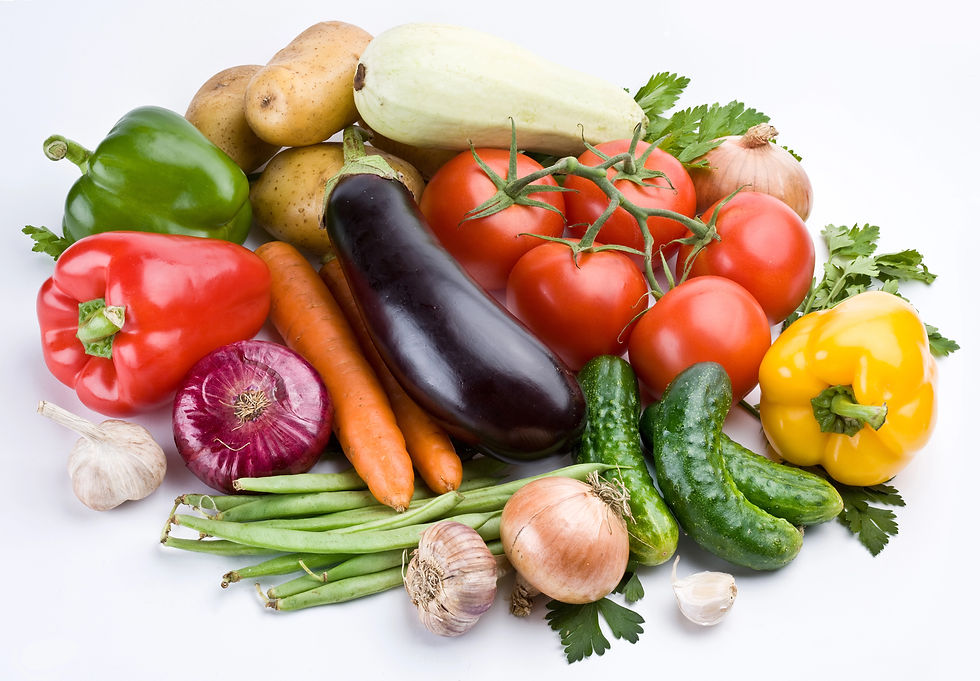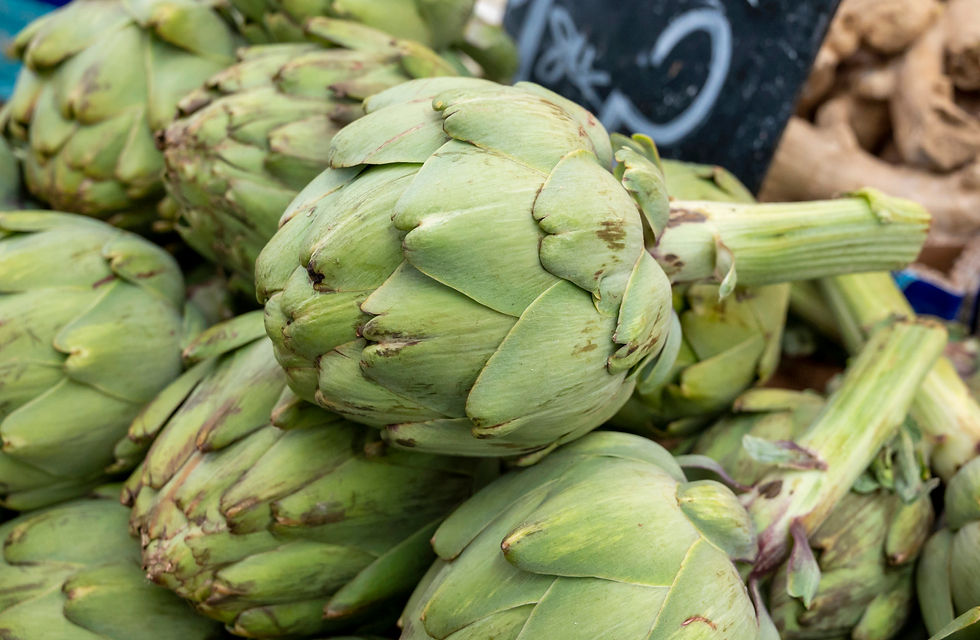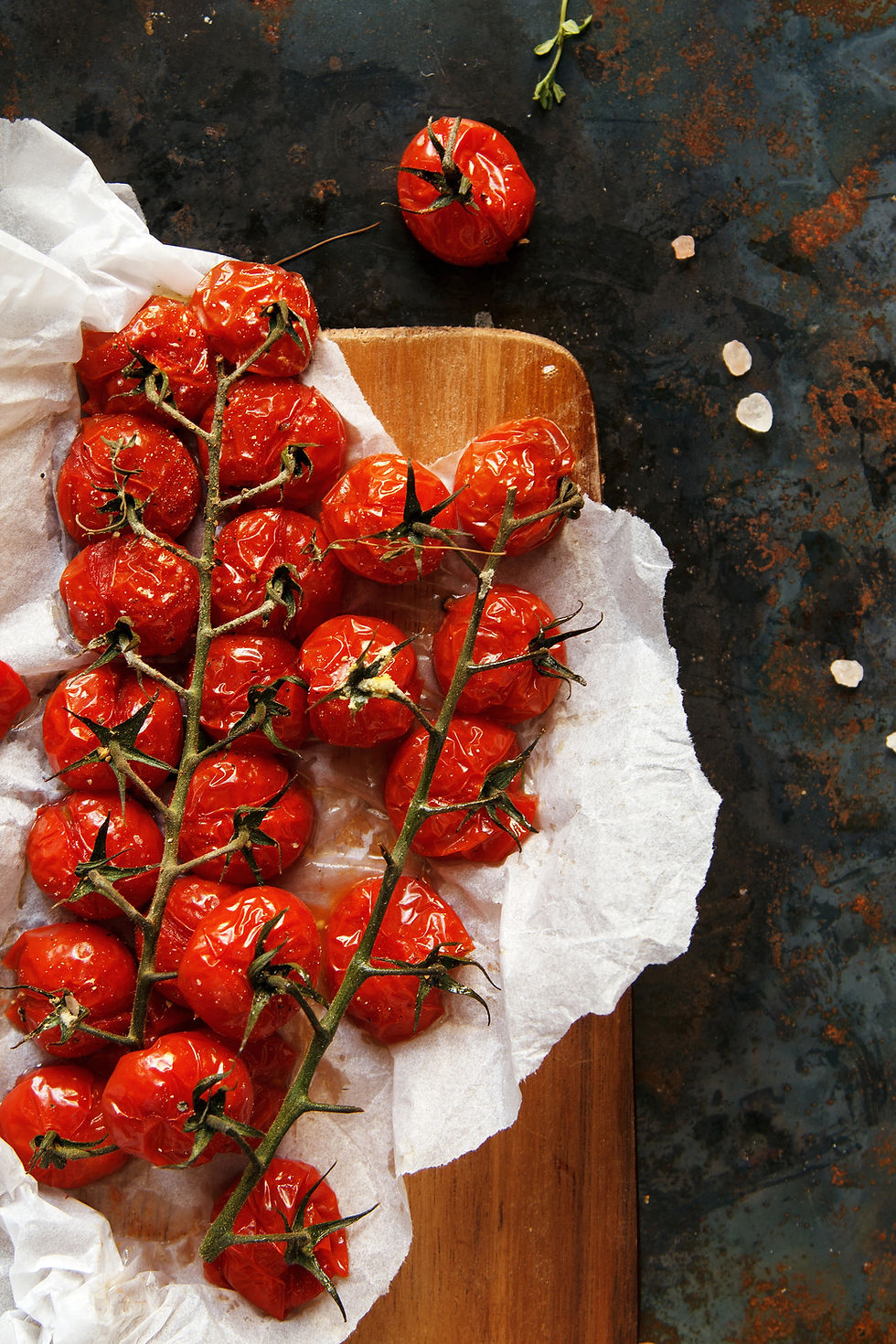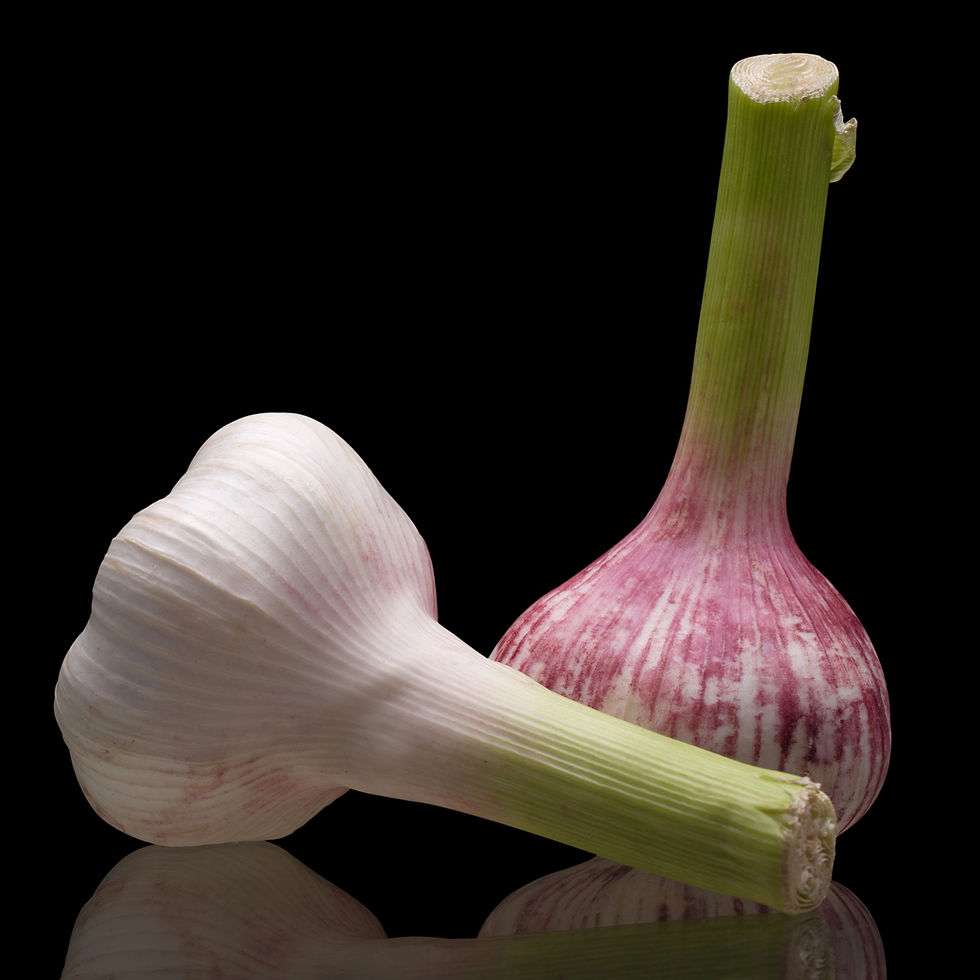15 Essential Mediterranean Vegetables for Bold Flavor & Vibrant Health
- Eliane Muskus
- Apr 14
- 6 min read
How I Used These Seasonal Ingredients in my award-winning cooking classes
Fresh, Seasonal, and Nutrient-Packed – A Chef’s Perspective

Why Mediterranean Vegetables Are the Heart of Flavorful, Healthy Cooking
The Mediterranean diet is celebrated for its rich flavors, fresh ingredients, and incredible health benefits. As a chef, I built my entire approach around seasonal, locally sourced produce—whether at La Serviette Blanche, my Michelin-accredited restaurant in Cannes, or in my award-winning cooking classes.
My cooking classes were almost always fully booked, especially in summer, because we started at the source—Marché Forville, the famous market in Cannes. Each morning, my students and I handpicked the freshest Mediterranean vegetables, seafood, and herbs, ensuring that every meal we cooked was a celebration of pure, authentic flavors.
At my restaurant, I took the same approach. There was no fixed menu—every dish was created based on the finest seasonal ingredients available that day. This commitment to freshness and quality is what defines true Mediterranean cuisine.
Bringing Mediterranean Vegetables into Your Kitchen
✔ Start small – Choose a couple of Mediterranean vegetables each week and experiment with simple techniques like roasting, grilling, or blending into dips.
✔ Stock your pantry – Keep extra virgin olive oil, citrus, fresh herbs, and garlic on hand—these ingredients help bring out the best in every vegetable.
✔ Balance flavors – Mediterranean cooking is about contrast—sweet and savory, tangy and rich, fresh and smoky.
🌿 Mediterranean vegetables are more than just food—they’re a way to bring freshness, balance, and bold flavors to every meal.
💬 Which Mediterranean vegetable do you use most in your cooking?
Here are 15 essential Mediterranean vegetables I worked with when in season—each packed with bold flavors, vibrant colors, and powerhouse nutrients.
1. Artichokes – A Mediterranean Superfood

✔ Supports digestion, liver function, and heart health
✔ High in fiber, folate, and antioxidants
✔ A staple in French, Italian, and Greek cuisine
Popular Dish at La Serviette Blanche:
🔥 Grilled artichoke hearts with lemon aioli and smoked paprika
💡 Chef’s Tip:
Braise artichokes in extra virgin olive oil, garlic, and lemon juice for a simple but deeply flavorful Mediterranean dish.
2. Asparagus – A Springtime Delight
✔ Rich in vitamin K and folate for bone and heart health
✔ Popular in Mediterranean risottos, pastas, and grilled vegetable dishes
🍋 Cooking Class Favorite in Spring:
Asparagus and truffle risotto with Parmesan
💡 Chef’s Tip:
Blanch asparagus briefly in salted water, then sauté in olive oil with shallots and lemon zest for a vibrant side dish.
3. Beets – Sweet, Earthy, and Packed with Antioxidants
✔ Supports circulation and lowers blood pressure
✔ A staple in roasted dishes, salads, and mezze platters
Popular Dish in My Cooking Classes:
Beet carpaccio with goat cheese, arugula, and aged balsamic
💡 Chef’s Tip:
To mellow their earthy taste, slice beets thinly and marinate them overnight with ginger syrup—perfect for those who usually dislike beets!
4. Bell Peppers – A Mediterranean Vitamin C Powerhouse
✔ More vitamin C than an orange—boosts immunity and skin health
✔ Key ingredient in ratatouille, stuffed peppers, and Mediterranean stews
🔥 One of our popular dishes at my restaurant:
Ratatouille with roasted bell peppers, zucchini, eggplant, and tomatoes
💡 Chef’s Tip:
For an intense smoky flavor, char bell peppers over an open flame, peel, and marinate in olive oil and garlic.
5. Carrots – A Staple in Mediterranean Mezze and Stews
✔ High in beta-carotene for eye and immune health
✔ Used in Moroccan carrot salads, Provençal soups, and hearty vegetable dishes
🥕 Cooking Class Highlight:
Honey-glazed carrots with cumin and fresh thyme
💡 Chef’s Tip:
Roast carrots with olive oil, cinnamon, and a touch of honey for a delicious sweet-savory flavor.
6. Eggplant – The Ultimate Mediterranean Ingredient
✔ Packed with antioxidants and polyphenols for heart health
✔ Essential in baba ganoush, moussaka, and grilled eggplant recipes
🔥 A popular dish in our cooking classes in Cannes:
Grilled eggplant with tahini, pomegranate molasses, and fresh mint
💡 Chef’s Tip:
Best way to cook eggplant Mediterranean style, Mediterranean eggplant recipes, how to remove bitterness from eggplant
Salt sliced eggplant for 30 minutes before cooking to remove bitterness and enhance its creamy texture.
7. Garlic – The Soul of Mediterranean Cooking
✔ Essential in nearly every Mediterranean dish, from sauces to marinades and braises
✔ Rich in sulfur compounds that support immune health and reduce inflammation
✔ Used raw for a bold kick or roasted for a deep, mellow sweetness
🧄 A Kitchen Staple at My Restaurant & Cooking Classes:
We often roasted fresh young garlic, which is milder and less pungent than aged garlic, making it perfect for blending into Mediterranean dishes without overpowering the flavors.
💡 Chef’s Tip:
For a silky, caramelized flavor, roast whole bulbs of young garlic at 175°C (350°F) for about 40 minutes with a drizzle of extra virgin olive oil. The soft, golden cloves can be spread on warm bread, mashed into dressings, or stirred into creamy sauces. If using aged garlic, balance its stronger taste by roasting longer or mixing it with citrus and herbs.
8. Radishes – Crisp, Refreshing, and Underrated
✔ Aids digestion and detoxification
✔ Common in Mediterranean mezze, salads, and pickled vegetable dishes
🥗 Popular Dish in My Cooking Classes:
Radish tzatziki—Greek yogurt, shredded radishes, dill, lemon zest, and garlic
💡 Chef’s Tip:
Roasting radishes mellows their sharp bite—toss them with olive oil, garlic, and sea salt before roasting at 200°C/400°F/180° Fan for 20 minutes.
9. Tomatoes – The Heart of Mediterranean Cooking

✔ Packed with lycopene, a powerful antioxidant that supports heart and skin health
✔ Essential in Mediterranean salads, sauces, stews, and baked dishes
✔ Versatile—enjoyed fresh, sun-dried, roasted, or slow-cooked
🍅 A Staple in My Restaurant & Cooking Classes:
We regularly roasted fresh tomatoes to intensify their natural sweetness and create deep, rich flavors for Mediterranean dishes.
💡 Chef’s Tip:
For perfectly roasted tomatoes, slice ripe tomatoes in half, drizzle with extra virgin olive oil, sprinkle with sea salt, thyme, and garlic, and roast at 180°C/355°F/160° Fan for 30–40 minutes until slightly caramelized and juicy. These oven-roasted tomatoes add depth to salads, pastas, sauces, and bruschetta without drying out.
The Mediterranean Secret to Flavor & Longevity
At La Serviette Blanche in Cannes, we didn’t just cook with Mediterranean vegetables—we celebrated them. Every dish was crafted with the freshest seasonal produce, bringing together bold flavors, healthy ingredients, and time-honored traditions.
Want to experience the magic of Mediterranean cooking? Start with these 15 essential vegetables—they are the foundation of heart-healthy, delicious meals that have stood the test of time.
💬 What’s your favorite Mediterranean vegetable to cook with?
How I Used Young Garlic in My Restaurant & Cooking Classes
At La Serviette Blanche, whenever young garlic was in season, I made sure to feature it in my daily changing menus and cooking classes. Since Mediterranean cuisine relies heavily on fresh, seasonal ingredients, young garlic added a unique depth to many dishes while keeping the flavors balanced and refined.
Many of my students, from the USA and Canada, were not very familiar with young garlic and how it differs from regular aged garlic. They were always delighted to discover its milder, sweeter flavor and how effortlessly it blended into Mediterranean dishes, adding depth without overpowering other ingredients.
🌿 Why I Chose Young Garlic Over Regular Garlic:
✔ Milder and sweeter, making it perfect for fresh, delicate flavors
✔ No peeling required—just trim the ends and use the entire stalk
✔ Tender texture—roasts and caramelizes beautifully without overpowering dishes
How I Used Young Garlic in My Cooking Classes

In my award-winning cooking classes, my students loved discovering how young garlic transformed dishes with its delicate yet aromatic essence. Some of the ways we used it included:
🥗 Mediterranean Salads & Vinaigrettes – We minced young garlic into lemony vinaigrettes, giving them a subtle garlic flavor without the sharp bite of aged garlic.
🔥 Grilled Young Garlic – Instead of chopping it, we grilled whole young garlic stalks, lightly brushed with extra virgin olive oil and sea salt, until soft and lightly charred—perfect as a side dish or topping for grilled fish.
🍞 Young Garlic Confit – One of my favorite techniques was slow-roasting young garlic in olive oil at a lower temperature. The cloves became buttery and spreadable, ideal for warm rustic bread, homemade hummus, or pasta sauces.
How I Used Young Garlic in My Restaurant Menus
Since my restaurant had no fixed menu, I worked with the best ingredients available daily. When young garlic was in season, I featured it in:
🥘 Light Mediterranean Sauces – Blended into sauces for roasted vegetables, seafood, or pasta to create a smooth, aromatic base without overpowering other ingredients.
🐟 Fish & Seafood Dishes – I gently sautéed young garlic with olive oil, fresh herbs, and lemon zest as a finishing touch for grilled sea bass or prawns.
🍆 Vegetable Tarts & Savory Pastries – Young garlic worked beautifully in Provencal-style tarts with zucchini, tomatoes, and goat cheese, giving the filling a mild, aromatic depth.
Why Young Garlic Was a Must-Have in My Kitchen
At La Serviette Blanche, working with seasonal Mediterranean ingredients was key to delivering dishes that were fresh, vibrant, and deeply flavorful.
✔ Young garlic allowed me to build layers of flavor without overwhelming delicate dishes.
✔ It enhanced sauces, vinaigrettes, and roasted vegetables with a smooth, mellow warmth.
✔ It showcased the beauty of Mediterranean cooking—simple ingredients, big flavors.









Comments